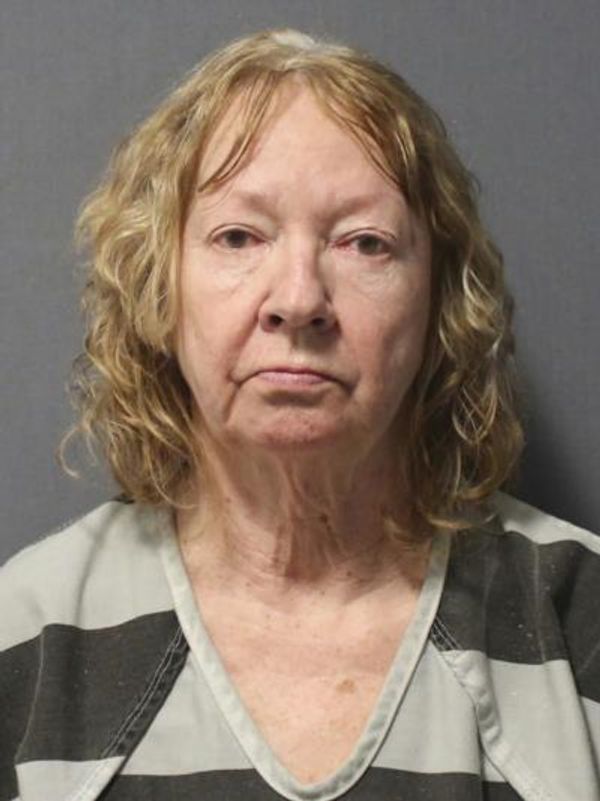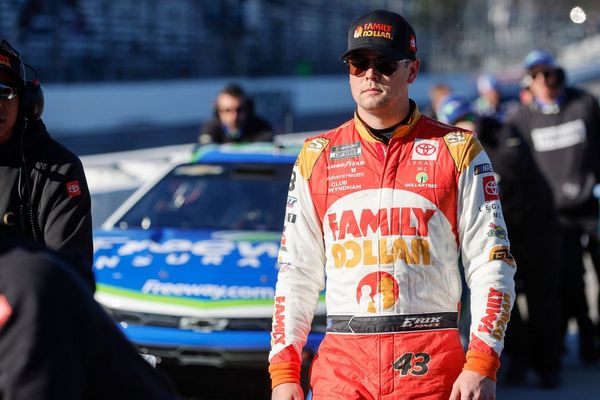
Patient: Mechanism of injury: self-immolation. Pt conscious upon EMT arrival. Lighter fluid and matches on scene. When asked about the incident, pt reported intent to “turn herself into a phoenix.” Psych eval ordered.
The summer before last, I met a woman who lit herself on fire. I’ll call her R. One evening in June, she poured lighter fluid over and into her body—down her mouth and up her rectum—and struck a match.
Self-immolation isn’t unheard of on the burn unit. But her case included a remarkable detail: “Pt self-reported the incident.” Translation: R herself called 911 while she burned. When the ambulance arrived, she was still smoldering—hair and jean cuffs smoking, iPhone hot to the touch.
In the ICU, her lungs were scanned for smoke damage. Doctors placed a central IV line, racing to pump in fluids faster than her wounds could leak them out. On day three, she had surgery: Allografts (temporary “bandages” made of cadaver skin) were stitched over her deepest burns to keep infection at bay. Meanwhile, social workers tried and failed to contact her family, and psych pronounced her “bipolar schizophrenic” with “no immediate threat to others or self.” Finally, on the sixth day, R’s name appeared on the daily-wound-care board above the nursing station: a sign, in the unspoken code of a burn ICU, that a patient has “made it,” and now the real work can begin.
I was a chaplain intern that summer. My job was to help patients and families deal with the shock of immediate crisis—to explain that 60 percent burn damage across a human body is survivable, that yes, your loved one’s face looks scary right now, but it will get better with time. As weeks stretched to months in the grim rhythm of surgeries (excision, recovery, graft, recovery, repeat), my task was to bear witness to grief and exhaustion, and to hear impossible questions. Will my child recognize me? Will my husband still love me? What did I do to deserve this pain?
The first time I stopped by R’s room, she looked asleep. I approached quietly, intending to leave a card—Welcome from Spiritual Care! But as I passed the foot of the bed, R’s eyes snapped open, and she drew a ragged breath.
“They told me the chaplain was coming!” she said hoarsely. “Listen: I need you to believe me. I’m not crazy. I didn’t want to kill myself. I just wanted to be closer to God.”
Her smoke-scorched voice was raw and rasping. Tears spilled down her blistered cheeks and pooled in the holes where her ears used to be. The warm salt liquified the ointment on her neck, coating her skin in a stinging glaze. She made no move to wipe the tears away with her bandaged hands, though I think she could have. Her eyes shone with a certainty that was wholly lucid and sane.
Then she said, “Do you understand?”
And I said, “Yes.”
It took me nearly a year to grasp what that yes meant. For months I wondered about the certainty of my response. To say no to R would have been cruel. It would have violated the golden rule of chaplaincy: Make the patient feel heard and respected, no matter what you really think. But my yes wasn’t the formulaic assent of a chaplain-in-training who knows what she’s supposed to say. My answer arose from somewhere deep within me. It was visceral—a connection not of mind to mind or spirit to spirit, but flesh to flesh.
Let me tell you who I really was that summer. On the surface, I was a model chaplain intern. I held the hands of the dying, delivered terminal diagnoses, watched patients my age bleed out from gunshot wounds. I loved the adrenaline, the purpose, the forced surrender of the illusion that I could control or predict what would come.
But my body was shutting down. My own illness, anorexia nervosa, had reawakened several months earlier, stirred by the loneliness of COVID and the pressure of graduate school. I’d lived with my eating disorder for eight years—nearly a third of my lifetime—in various states of remission, crisis, and active recovery. That summer, the old thoughts and habits had returned: skipped meals, too-long runs in the predawn. My body was consuming itself, not through the sudden conflagration of matches and lighter fluid but through the steady combustion of glycogen to glucose, the breakdown of fat cells and muscle fibers. I knew this, and yet I couldn’t help myself.
When you have anorexia, you live in a biological contradiction. Resting and eating—vital and necessary to all living creatures—feel alien and threatening. It’s not a choice or a feat of willpower. It’s a physical fact. All of your body’s systems conspire to maintain a “negative energy balance”—a state of starvation. Being hungry feels more calming than being full. Your amygdalae—the brain’s centers of fear and distress—light up at the thought of food, making you want to leap up from the table and sprint away.
So when R said “I didn’t want to kill myself. I just wanted to be closer to God. Do you understand?,” I knew what she meant. She was saying: Do you see how destroying your body can feel like the only way to survive? Yes, I saw. And yes, I understood.
In the hospital, R’s surface burns healed over with pink, clean skin. Week after week, she returned from surgery with a new patchwork of autografts: strips of healthy tissue stitched in a crisscross pattern over her thighs, arms, and back. In the spaces between the autografts, surgeons sprayed a solution of R’s own skin cells, artificially multiplied and suspended in liquid, dispensed through an aerosol syringe.
Eventually, social work found R’s family—her sister and adult daughters. Slowly, they helped fill in her story: a good mother who’d struggled with debilitating mental illness and eventually stopped taking her meds.
Whenever I visited R, she wanted to talk about God. “Where’s God in your life right now?” I once asked her.
“God is a cloud of love, hot and light,” she told me. “He’s in this room now—I feel it!” Her eyes closed, savoring a presence I couldn’t see.
Ever since the moment I felt that connection with R, I’ve struggled to talk about it. Can I compare her suffering with my own suffering, her body with my body? On what levels—physical or spiritual, literal or figurative—does the analogy operate? I’m afraid of turning R into a metaphor, substituting my pain for hers. R is a person I met when both of our bodies were vulnerable. What am I really saying here?
It’s easiest to start with the physical. It shouldn’t be possible for a creature to choose, months on end, to override the signals telling her to nourish her body. It shouldn’t be possible for a living being to set fire to her own flesh. R and I were alike: Somehow, our mind had convinced us that violating the natural order was necessary. It might be safest—and still interesting—to leave the comparison there.
But for R, self-immolation wasn’t about survival; not really. It was about seeking. R wanted something she wasn’t getting. She was willing to give up her body to get it. R called that something “God.”
Was my own illness a form of seeking? A therapist once told me that eating disorders are “disorders of communication.” They’re your body’s cry that something at the level of your soul wants to be seen and transformed. That idea has always made me uncomfortable. It seems to belong to a time when we thought eating disorders were choices, before we understood that they’re metabo-psychiatric conditions—complex interactions of genes, environment, temperament, and physiology. Could I want something from an illness I hadn’t chosen? And if I let myself go there, what would I say I was seeking?
All summer at the hospital, I listened with that question in mind. I heard R’s yearning for God, her craving for love and attention. Day after day, I asked my patients, “Tell me about your suffering. What’s the worst of it?” They delivered lifetimes of festering hurt, at last, into the open air. And I envied them. I wanted someone to ask me the same question. What’s the worst of it?
“The only way to express my suffering,” I once wrote in my journal, “is to show it through my body.” By suffering, I don’t mean a childhood of loss or neglect. I mean the suffering we all experience—the pain of disappointment, silence, and misunderstanding. I grew up helping care for my developmentally disabled brother, whose anger—unverbalized, inexpressible—often burst out as physical rage. Dark feelings built up inside me—fear, resentment, grief, confusion—but I had nowhere to put them and no way to make sense of them. “Good” sisters, I sensed, were supposed to be patient, generous, and kind. Over time, I felt a grating dissonance between who I was outside and who I was inside. I was praised for being “responsible” and “selfless,” while deep down I felt guilty and afraid.
This added up to a set of beliefs that no amount of love (and I had plenty) could counteract. You’re broken. You’re wrong. No one understands you. In order to be acceptable, you have to hide your true self.
So I did what I could. I tried to make my suffering visible. I matched my inner emptiness with a physical emptiness. My eating disorder wasn’t deliberate or conscious, but it was functional. I needed something outside me to affirm that my feelings were real. In the fleeting alignment of body and soul, united in suffering, I found temporary—if costly—relief.
And yet there’s an irony here. My anorexia arose from a desire for connection and validation, but anorexia is the antithesis of both. With every missed meal, I cut myself off from the web of energy and matter that unites every organism on this planet. I believed I was beyond connection, beyond love.
So yes, I’m uncomfortable with the language of “seeking.” It threatens to validate actions that are tragic and destructive. What R did was horrific and arguably meaningless. Her “true” self didn’t choose it; her schizophrenia almost certainly did. In the end, she got some attention and care from others. In mid-July, I stopped by to tell R that her daughters wanted to sing “Happy Birthday” on Zoom. “It’s funny,” she said. “Now that I’m sick, everyone says they love me. They never used to say that before.” But seeking that connection almost killed her, just as anorexia has nearly killed me.
Four months after I met R, in mid-November, I sat on the steps outside my apartment. My heart skipped weakly, slowly. My fingers trembled as I dialed the number of a treatment center for eating disorders. A few days later, I checked myself into a residential program 3,000 miles away. I spent 100 days there—about the same amount of time that R spent on the burn ward. My body healed, and I relearned how to eat. I heard my most shameful thoughts—the deepest secrets of anorexia—spoken aloud by others. I learned I wasn’t alone.
I never read my admission chart, but it would have said “Pt self-reported the incident.” I don’t know what made me finally seek help. It wasn’t hope, and it wasn’t faith. It was primal, the reflex of a body that refused to stop living. My chromosomes carry a tendency toward self-destruction. But they also carry a mysterious, unrelenting drive to endure.
Here’s what I’ve come to believe: Beneath every self-destructive human behavior is the desire for connection. The behavior is distorted, but the desire is sound. And here’s what fascinates me: Beneath our longing for connection is also the belief that connection is possible, even when our actions seem to say otherwise.
I used my illness to express my suffering because I thought that no one would listen to my words. But what I was doing betrayed the hope that someone would notice and care. It’s easy to assume that R’s self-immolation meant she’d given up on connection. Despair and loneliness had won, ending in a final, self-obliterating act. But R said, “I didn’t want to kill myself. I just wanted to be closer to God.” She lit herself on fire not because she believed connection wasn’t possible but because she knew it was possible, and she thought that this was the way.
The last day I visited R, she was listening to music. Her feet, wrapped in bandages and yellow compression socks, swayed back and forth to the beat. She hummed along. Late-afternoon sun spilled through the half-closed blinds.
I began to cry. I looked at R, and she was crying too. We stared at each other, and the gaze we shared was more than understanding. My tears were her tears, and her pain was my pain—two bodies telling each other what neither mind could say.
I’m describing a kind of epiphany, a momentary awareness of oneness. And because R called what she was seeking “God,” perhaps that’s the right word for what I felt. But I prefer the language of the theologian Paul Tillich, who calls God the “infinite and inexhaustible depth and ground of all being.” We come from this depth, and sometimes we glimpse it. Infinity breaks into the present, and it jolts us to attention. For a moment, the space between us collapses. Too soon, the pain of aloneness returns, and we grieve—not because we don’t believe in the possibility of connection but because we do.
We’re all finite and fragile. And in our separation, we’re united. When your body is whole, it’s easy to forget that. But the broken body, the wounded body, forces us to look and remember. We reach a point where we can’t hide anymore. Our suffering—our longing—shows through our blistered skin, our starving flesh. It happens before we feel ready, before we stop protesting, before we assent or agree.
In those moments, the fears of the mind (you’re separate; you’re broken) meet the reality of the body, and the body is stronger. We reach—and sometimes, we’re held.







